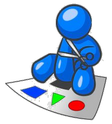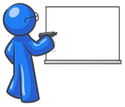Application Design
The design phase takes the documented requirements specification, and determines and documents how the required new functionality or modification is to be done by the programming and development team.
An analogy would be the construction plans a builder would use to build your new home.
What It Involves
In systems design the design functions and operations are described in detail, including screen layouts, business rules, process diagrams and other documentation. The output of this stage will describe the new system as a collection of modules or subsystems.

The design stage takes as its initial input the requirements identified in the approved requirements document. For each requirement, a set of one or more design elements will be produced as a result of interviews, workshops, and/or prototype efforts.
Design elements describe the desired software features in detail, and generally include functional hierarchy diagrams, screen layout diagrams, tables of business rules, business process diagrams, pseudo-code, and a complete entity-relationship diagram with a full data dictionary. These design elements are intended to describe the software in sufficient detail that skilled programmers may develop the software with minimal additional input design
What Is Produced

A detailed document providing clear instructions as to what needs to be constructed or modified. This will consist of a descriptive document, accompanied by one or more of the following:
- Form and Report layout designs
- Program flowcharts
- Data flow diagrams
- A development schedule or timetable
- A programming standards guide
Why It Is Done

Without clear direction as to exactly what needs to be constructed, the development or programming team may either lose time asking for more direction, or provide their own interpretation, which may have 'unexpected' consequences.


 About Us
About Us